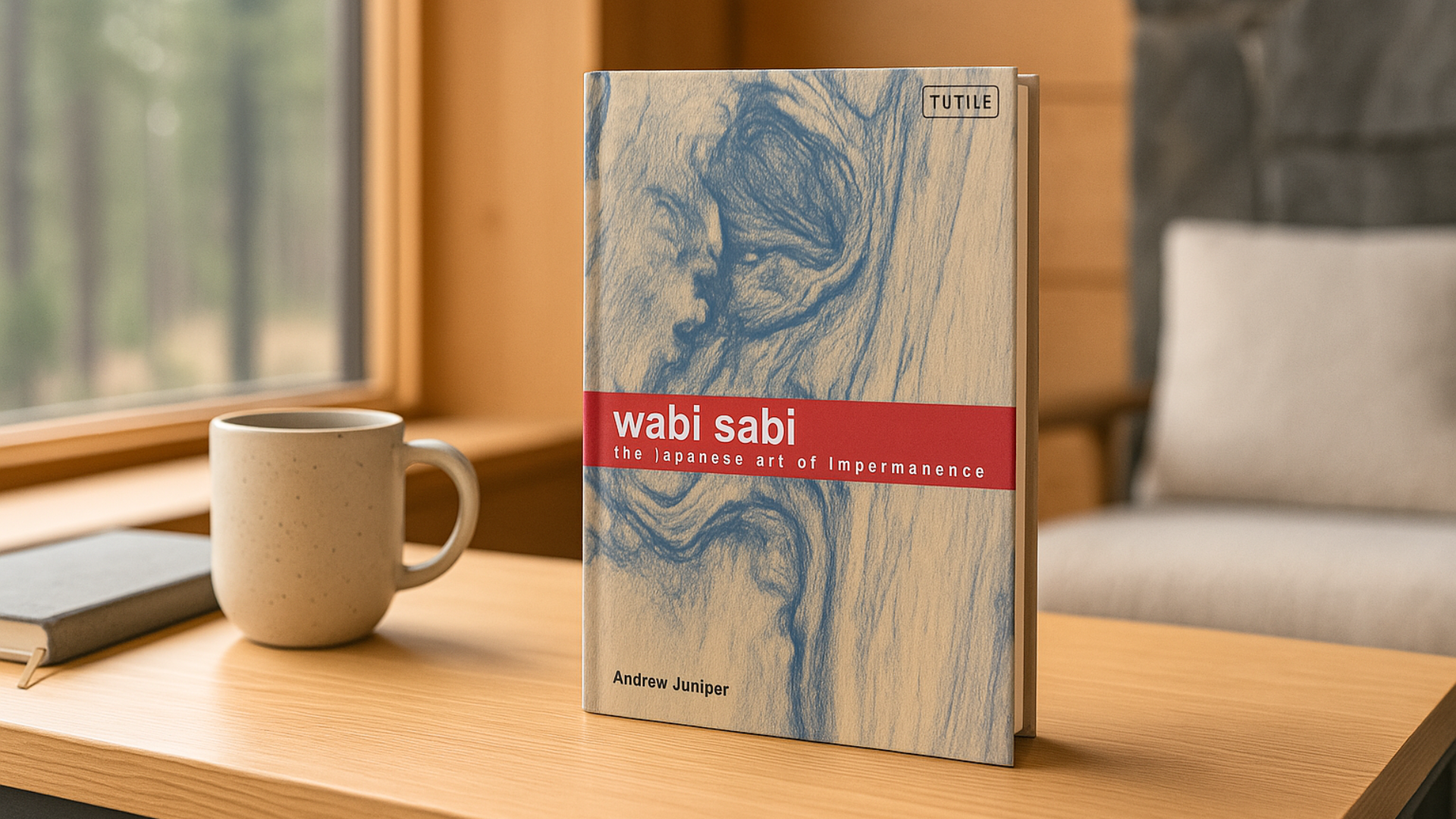Wabi Sabi: A Book for Slowing Down and Seeing Differently

Book Review: Wabi Sabi by Andrew Juniper
A thoughtful invitation to reconsider beauty, impermanence, and meaning in everyday life
In Wabi Sabi: The Japanese Art of Impermanence, Andrew Juniper offers more than an introduction to Japanese aesthetics. He presents a reflective and deeply researched exploration of a worldview that finds meaning not in perfection, but in subtlety, simplicity, and transience. Rooted in Zen and Taoist philosophy, wabi sabi is less a style and more a way of experiencing the world. Juniper writes not to define it in absolute terms, but to guide readers toward a deeper understanding of how beauty can be found in the quiet, the worn, and the incomplete.
This book is not about how to style your home. It is about how to notice the grace of things as they are.
What the book promises
Juniper sets out to unpack the aesthetic and philosophical concept of wabi sabi, which is often referenced but rarely explained in depth. He acknowledges the difficulty of translating such a nuanced idea into Western terms and resists oversimplification. Instead, he promises a careful and respectful look at how wabi sabi developed over time and how it continues to shape Japanese art, design, and spiritual life.
Readers are promised a thoughtful blend of cultural history, aesthetic theory, and philosophical reflection. The goal is to offer context, not a formula. Juniper invites readers to consider how embracing imperfection and impermanence might change the way they relate to both objects and experiences.
What the book delivers
The book delivers a nuanced and richly contextual journey through the evolution of wabi sabi. Juniper begins by tracing its roots in Taoist and Buddhist thought, explaining how ideas such as emptiness, simplicity, and impermanence became central to Japanese spiritual and artistic traditions. He then explores how these ideas took shape in specific art forms, such as the tea ceremony, pottery, calligraphy, and architecture.
Each chapter moves gradually from philosophy into lived expression. For example, Juniper describes how the rustic simplicity of a hand-formed raku tea bowl communicates more than aesthetic taste. It reflects a worldview that honours age, process, and quiet dignity.
The book also touches on how wabi sabi can inform modern life, though not in a self-help tone. Juniper does not offer a checklist for achieving wabi sabi living. Instead, he offers reflections on how its principles might offer relief from perfectionism, consumerism, and the rush of modern life.
Style and structure
Juniper’s tone is thoughtful, respectful, and softly academic. He writes with an awareness that he is translating a cultural and spiritual tradition for an audience that may be unfamiliar with its foundations. His voice is calm and measured, making space for reflection rather than asserting expertise.
The structure of the book is clear and well-paced. Early chapters focus on the philosophical foundations of wabi sabi. Later chapters explore how those foundations are reflected in artistic traditions, from ceramics to poetry. The final chapters consider how the spirit of wabi sabi can be recognized and appreciated today.
While there are no images, Juniper’s writing is vivid. His descriptions of texture, light, and atmosphere create a sense of immersion. Readers may find themselves slowing down simply by engaging with the language.
Where the book shines
The book shines in its commitment to nuance. Juniper never tries to reduce wabi sabi to a buzzword or design trend. Instead, he stays close to the idea’s origins, showing respect for the spiritual and cultural depth it carries. This allows readers to appreciate wabi sabi not just as an aesthetic, but as a lived philosophy.
His exploration of Zen and Taoist principles is particularly well-done. Juniper connects abstract concepts like non-duality and emptiness to concrete expressions in art and ritual. These links help readers understand how beauty can be an expression of spiritual truth.
His reflections on impermanence are also deeply moving. By showing how wabi sabi embraces the natural cycles of growth, decay, and renewal, Juniper offers a quiet counterpoint to modern values of permanence and polish. This makes the book especially resonant for those navigating change or seeking meaning in simplicity.
Light limitations
The book is more reflective than practical, which may not suit readers who are looking for step-by-step guidance on how to apply wabi sabi in their homes or creative projects. Juniper is clear that wabi sabi is not a style to be copied but a way of seeing to be cultivated. Still, readers looking for actionable advice may find themselves wanting more concrete examples or applications.
Because the book is grounded in philosophy and cultural history, some sections may feel abstract or slow-paced. Readers unfamiliar with Eastern thought may need to take their time, especially in the earlier chapters.
The absence of visual examples means the reader must imagine or research many of the art forms discussed. While this may encourage deeper engagement, it could be a barrier for visual learners or those less familiar with Japanese aesthetics.
Final thoughts
Wabi Sabi is a quiet and meaningful meditation on how beauty lives in imperfection and change. Andrew Juniper offers a respectful and informed perspective on a concept that often resists definition. Rather than flattening wabi sabi into trend or metaphor, he honours its subtlety and invites readers to sit with it, slowly and with care.
This book does not tell you how to decorate or design. It encourages you to observe, to notice, and to soften your expectations. It is for those who are drawn to the handmade, the unpolished, the fading, and the quietly resilient. It is for those who wish to meet life with more acceptance and presence.
Highly recommended for artists, designers, philosophers, and seekers who are curious about simplicity, impermanence, and the deep beauty of things as they are.